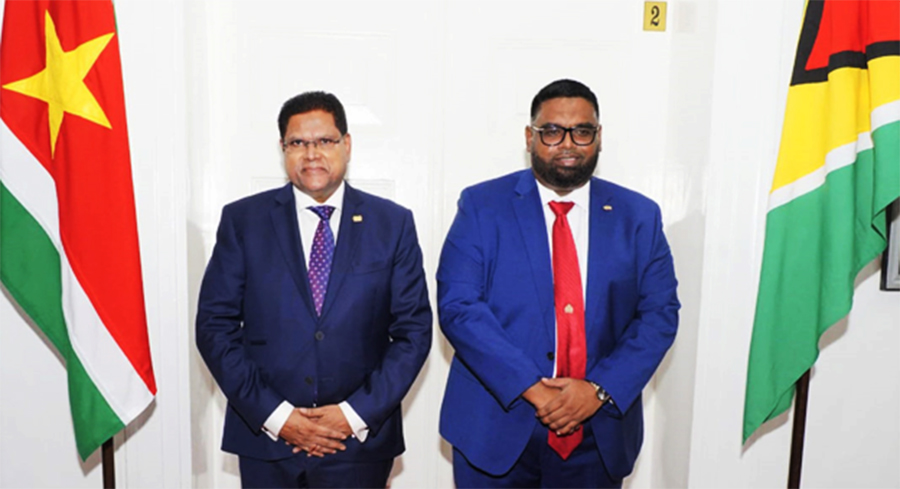There had been a period of time going back up to around five years ago, when international media reporting on Guyana and Suriname, including the Corentyne River dispute, was sprinkled with images of endemic poverty, underdevelopment and chronic instability. Reportage on the two countries offered a microcosm of a wider group of so-called ‘Banana Republics,’ unviable portions of ‘real estate’ in South America that counted among the ‘also rans’ among states in the international community. Guyana and Suriname began to experience their earliest taste of some measure of positive international exposure just over a decade when the two countries began to attract the more serious attention of the international media as likely emerging regional players in a hemispheric energy sector that had already had its own fair share of ‘big names.’
The prognosis for the two countries was that their respective oil discoveries would probably be near simultaneous and that the extent of their oil finds – when account is taken of the already established oil giants in South America, Venezuela and Brazil – would considerably shift some measure of attention from the petro giants of the Middle East. Actuality may not have gone with the script, so to speak, but the prognosis regarding the extent of the fossil fuel ‘holdings’ of the two neighbouring Republics has gone, very much, with the experts’ script. As things stand, Guyana is now busying itself with the preoccupations associated with re-presenting itself to the world as a bona fide petro state. Suriname, it is widely felt, is also on the cusp of doing so. Its bona fides remain ‘on hold’… not for long, it seems.
There may have been a delay in the French company TOTAL’s Final Investment Decision (FID) for offshore Block 58. Now we know that TOTAL and Apache are expected to make that decision in the 2024. This, it appears, has put the country’s timetable for its petro takeoff back on track. What is being hoped for as well is that the energetic bilateral initiatives that were being made by the Heads of Government in Georgetown and Paramaribo to pool their efforts to foster the kind of cooperation that would benefit both countries whilst, hopefully, putting the river dispute to one side. After all, Suriname’s ‘first oil,’ it is now widely predicted, will materialize somewhere between 2026 and 2027. The persistence of the linkage of ‘big players’ like TOTAL with Suriname’s oil promise, the challenges notwithstanding, points to the likelihood that the country’s oil and gas adventure is likely to be a profitable one.
TOTAL is reportedly targeting two discoveries in Suriname’s Block 58, the Sapakara West-1 oil and the Sapakara South. In the instance of the latter, the completion of an appraisal well has brought the news of a single reservoir holding 325 million to 375 million barrels of oil. In February 2023, the successful flow testing of the Sapakara South-2 well was announced, with 200 million barrels of oil in place identified. Suriname, understandably, will, in the immediate future, be preoccupied with its ‘first oil’ milestone as would other analysts of the oil and gas industry. Indeed, oil experts are already predicting that for a while, at least, the neighbouring South American countries, with no previous oil and gas profile to speak about will become one of the busiest locations on earth for the global oil and gas industry.
To their credit and their differences over the Corentyne River, notwithstanding, Presidents’ Irfaan Ali and Chan Santoki have been seeking to lay the groundwork for the two countries finding their oil wealth as good reason to work together. Georgetown and Paramaribo have already moved to sign a Memorandum of Understanding for the construction of a high-span bridge over the Corentyne River to link the two countries, a move which, if symbolism is anything to go by, would appear to point the direction in which the two countries may wish to go… together. If it is, Suriname that has had to do the waiting for its oil bonanza, the portents strongly suggest that the wait was worth the while. Suriname’s ongoing appraisal drilling has yielded results which suggest that oil recovery is simply a matter of time. As for what all this would mean for the future of Guyana/Suriname relations, that decision, it has to be said, will lie in the hands of the two countries.






